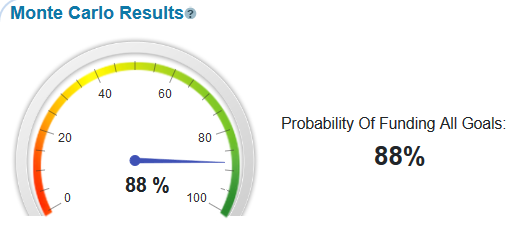Key Points:
- A high dividend yield many times signifies financial troubles for a company.
- In the long-run, it’s dividend growth that matters more.
- Look for companies with strong financials and a history of never cutting dividends.
Since bond yields fell by more than half during the 2008/2009 financial meltdown and recession, many people in retirement sold their bond holdings and bought stocks with relatively high dividend yields, hoping to make up for the lost bond interest. But as a lot of investors have found out, dividends are not the same as bond interest, especially if we’re talking about treasury bonds.
Bond interest is set by contract. It cannot be altered unless it’s a corporate bond and the company declares bankruptcy or negotiates lower interest payments with the bond holders. If it’s a treasury bond, the interest payments are as close to a 100% guarantee as we can get since the federal government would have to default for these to change. But dividends are a different story. A company can cut its dividend at any time, and many companies do. Take a look at the table below to see how dividends can be cut during tough times.
 The Case of General Electric
The Case of General Electric
A recent example of the perils of seeking out higher dividend yields is the case of General Electric GE). GE’s dividend yield approached 3% at the beginning of 2018. Many investors looked at the name and the dividend yield and figured that GE was a solid company that always makes money. How could their dividend ever be cut?
With GE’s reputation and a higher than average dividend yield, a lot of investors piled in. Then they watched the stock fall by over 50% and the dividend was slashed to one penny. This all happened because GE has too much debt and nearly had to declare bankruptcy.
High Dividend Yields Can Mean Problems With The Company
The first thing to ask when you come across a stock with a high dividend yield is, “What is driving this yield higher?” Is the dividend going up because the company is making more money and is therefore increasing its payout? That would be a good sign. But it’s also possible that he yield is higher because the stock price is declining due to problems with company earnings or debt or both.
This is why we have always recommended looking for companies on a solid financial footing with years of history of never cutting their dividends, even in recessions.
There is an interesting company that seeks to do this very thing. They are called Investment Quality Trends and they have a newsletter that details their portfolio of their favorite dividend paying stocks. They do not simply favor stocks with high dividend yields. Instead they seek out financially sound companies that have the capacity to grow their dividend over time. A few of their favorites are Exxon, IBM, Altria, American Express, Lockheed Martin, and Whirlpool.
According to Investment Quality Trends, their dividend paying portfolio has close to an 11% annualized rate of return over the past 30 years, while having volatility that is nearly 10% less than the overall stock market.
Using Dividend Payers To Reduce Volatility
We have discussed many times how the best dividend payers have lower performance volatility over time. Using the WealthTrace Financial And Retirement Planner we find that adding in lower-volatility dividend payers can significantly increase your probability of never running out of money. For example, we found that a 55 year old couple with $1 million saved in their IRAs would see their probability of never running out of money jump from 79% to 88% if they move to a portfolio similar to what Investment Quality Trends proposes.

Keep Track Of Your Dividend Payers
Dividend paying stocks can be great for retirement portfolios. The dividends can help provide enough income such that you never have to dip into investment principal. But dividend cuts can hurt, especially if are not diversified enough and you only own a handful of dividend paying stocks. If you are a do-it-yourself type when it comes to investing, wealth management, and financial planning, keep track of your dividend payers and keep up with their financial stability. It’s usually high debt loads that cause an established company to cry uncle and cut their dividend. Let GE be a cautionary tale.